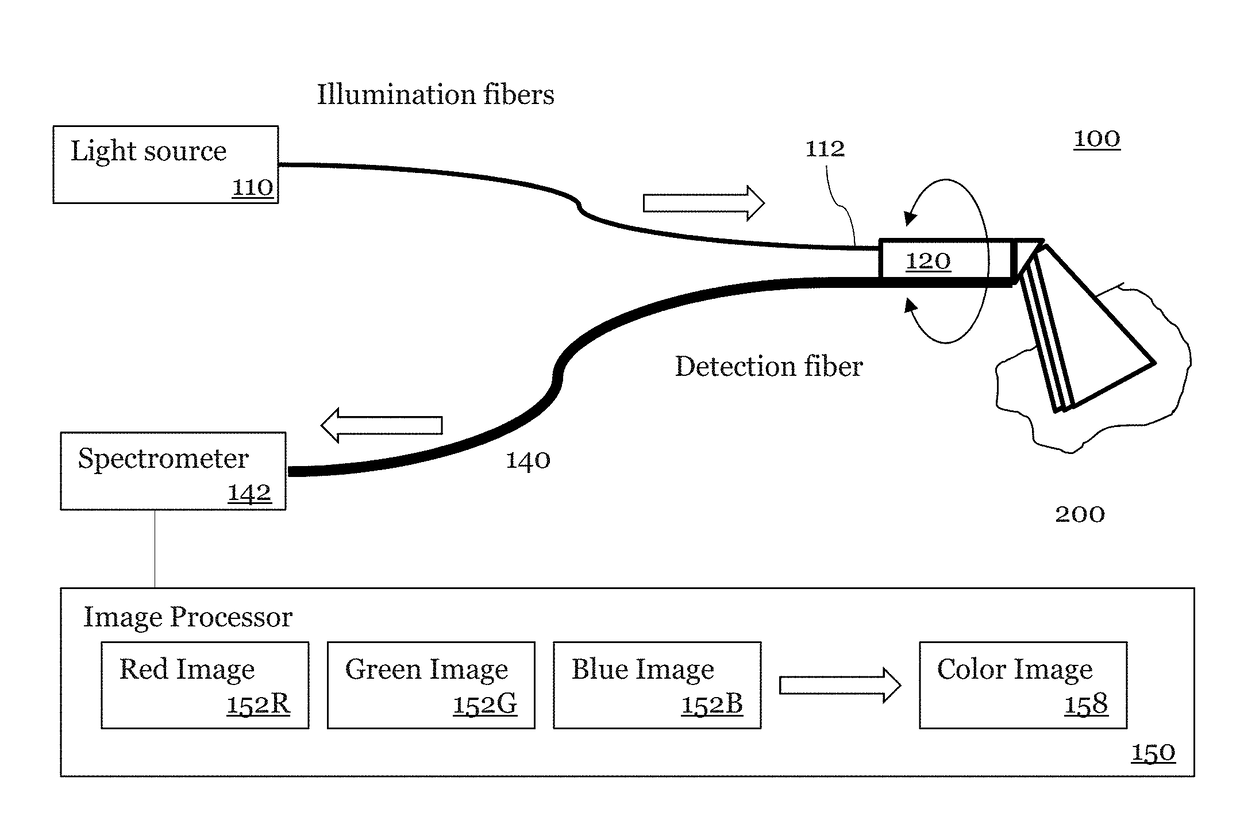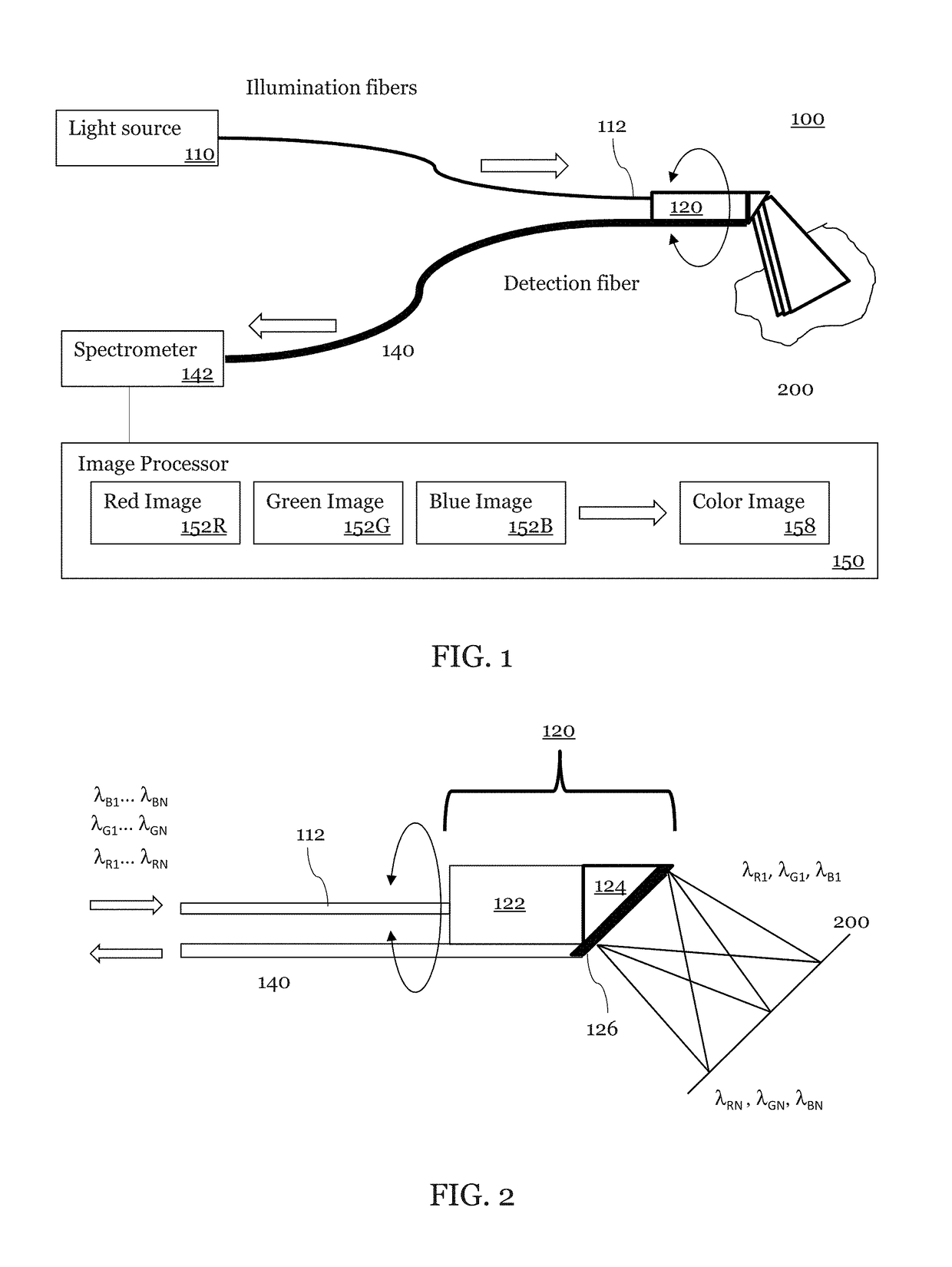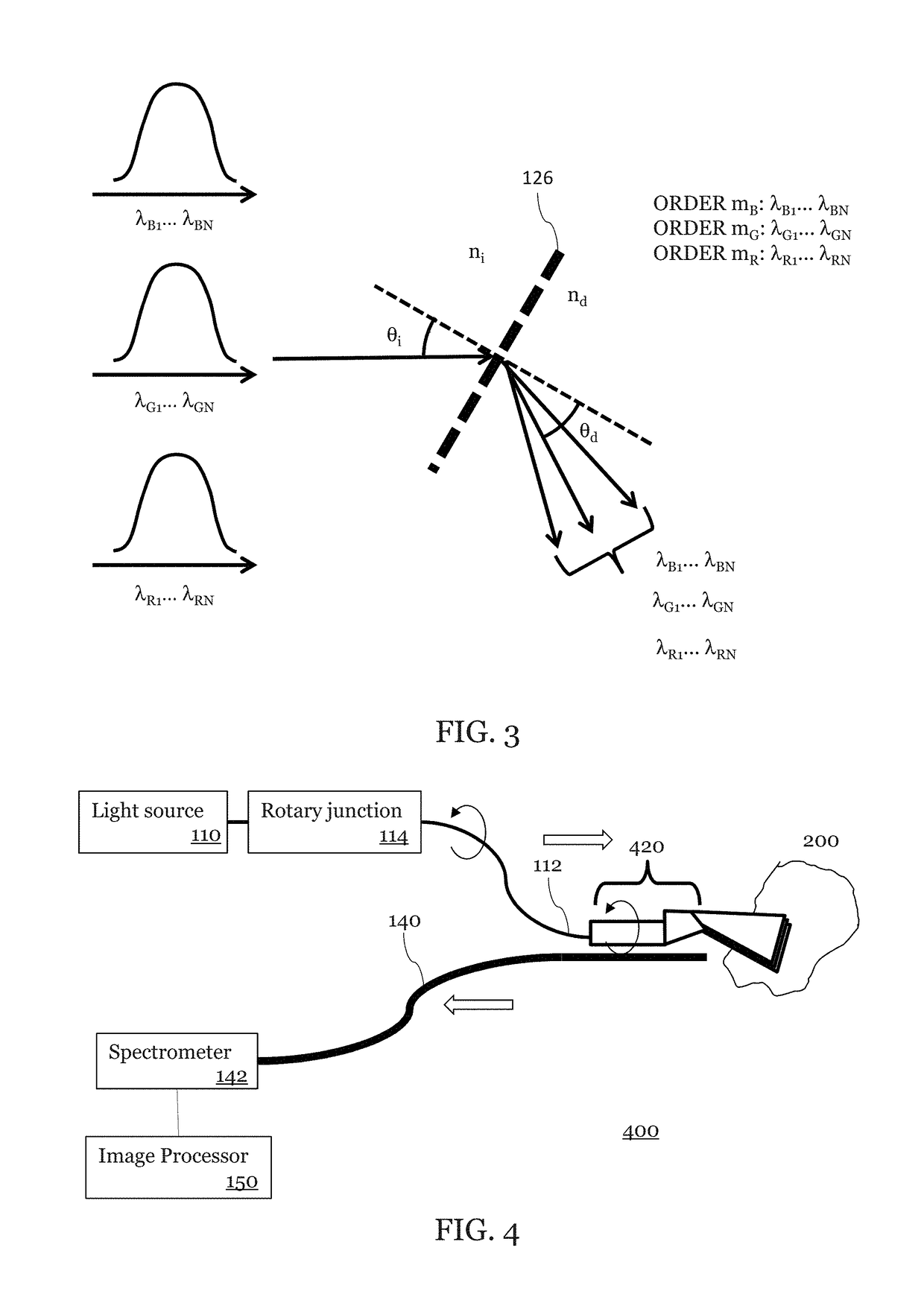Spectrally Encoded Probe with Multiple Diffraction Orders
a probe and diffraction order technology, applied in the field of endoscopes, can solve the problems of system difficulty in manufacturing and assembly, color information loss or convoluted spatial information, and large size of the prob
- Summary
- Abstract
- Description
- Claims
- Application Information
AI Technical Summary
Benefits of technology
Problems solved by technology
Method used
Image
Examples
first embodiment
[0055]An exemplary embodiment of a SEE probe system 100 according to the present disclosure is shown in FIG. 1. This exemplary SEE probe system 100 may include a light source 110, a probe 120, a spectrometer 142, and an image processor 150. In this embodiment, broadband light from the light source 110 is coupled into a light guiding component which may be an illumination optical fiber 112.
[0056]The broadband light has sufficient bandwidth to allow for spatial resolution along the spectrally dispersed dimension. In some embodiments, the broadband light is a broadband visible light sources that includes a blue band of light (including wavelength λB1 to λBN), a green band of light (λG1 to λGN), and a red band of light (λR1 to λRN). For example, the blue band contains 400-500 nm light, the green band contains 5000-600 nm light, and the red band contains 600- 800 nm. In other embodiments, the wavelengths of the broadband light are optimized for identifying specific features such as blood...
second embodiment
[0088]FIG. 4 is an illustration of a forward viewing SEE probe system 400 in which an embodiment may be implemented. The forward view SEE probe system also illustrates the use of a rotary junction 114 between the light source no and the probe 420.
[0089]As shown in FIG. 5, a light guiding component 112 (shown as an illumination fiber) transmits broadband light to the probe 120. A second light guiding component 140 (shown as a detection fiber) collects light. The probe 420 includes a light focusing component 122 and a grating component 126 which is shown attached to a spacer 524. The spacer has a mirror surface 528. The mirror 528 may be achieved, for example, by a reflective coating, a metal coating, or by using total internal reflection. The light guiding component 122 may be, for example, a GRIN lens or a ball lens and is fixed to an angle-polished spacer 524. The spacer 524 may be made of, but is not limited to, glass, heat-curable resin, UV-curable resin, or plastic.
[0090]As show...
PUM
 Login to View More
Login to View More Abstract
Description
Claims
Application Information
 Login to View More
Login to View More - R&D
- Intellectual Property
- Life Sciences
- Materials
- Tech Scout
- Unparalleled Data Quality
- Higher Quality Content
- 60% Fewer Hallucinations
Browse by: Latest US Patents, China's latest patents, Technical Efficacy Thesaurus, Application Domain, Technology Topic, Popular Technical Reports.
© 2025 PatSnap. All rights reserved.Legal|Privacy policy|Modern Slavery Act Transparency Statement|Sitemap|About US| Contact US: help@patsnap.com



